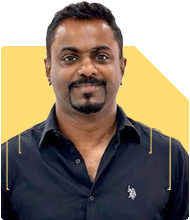Ramalingam Kalirajan |2833 Answers |Ask -Follow
Mutual Funds, Financial Planning Expert - Answered on Apr 30, 2024
He has an MBA in finance from the University of Madras and is a certified financial planner.
He is the director and chief financial planner at Holistic Investment, a Chennai-based firm that offers financial planning and wealth management advice.... more

I am 33yrs old and have been investing 20k SIP every month in the following funds for the last 10 months (I was investing 10k for 6 months before that): 1. Canara Robeco Bluechip Equity Fund Direct-Growth (3k) 2. PGIM India Midcap Opportunities Fund Direct-Growth (2k) 3. LIC Gold Direct-Growth (3k) 4. Parag Parikh Flexi Cap Fund Direct-Growth (3k) 5. HDFC Index S&P BSE Sensex Direct Plan-Growth (3k) 6. Mirae asset emerging bluechip fund Direct-Growth (2.5k) 7. Quant Tax Plan Direct-Growth (3.5k) In addition to this, I am putting 35k per month as VPF and 1lakh every year in NPS. I am a moderate risk taker. 1. Is this sufficient to build a 3cr corpus in the next 20 years? 2. Should I add a small cap MF to my portfolio and if yes, which one? 3. Is my portfolio over-diversified?
Considering your moderate risk appetite, adding a small cap mutual fund to your portfolio could diversify your investments further. Look for a well-managed small cap fund with a consistent track record and a focus on quality stocks.
Your portfolio appears to be adequately diversified across different asset classes and fund types. However, periodically review your portfolio to ensure alignment with your financial goals, risk tolerance, and investment time horizon. Consult with a Certified Financial Planner to fine-tune your investment strategy based on your individual circumstances.
You may like to see similar questions and answers below
Nikunj Saraf |308 Answers |Ask -Follow
Mutual Funds Expert - Answered on May 24, 2023
Sanjeev Govila |458 Answers |Ask -Follow
Financial Planner - Answered on Feb 06, 2024
Ramalingam Kalirajan |2833 Answers |Ask -Follow
Mutual Funds, Financial Planning Expert - Answered on Apr 30, 2024
Ramalingam Kalirajan |2833 Answers |Ask -Follow
Mutual Funds, Financial Planning Expert - Answered on May 14, 2024
Anu Krishna |885 Answers |Ask -Follow
Relationships Expert, Mind Coach - Answered on May 21, 2024
Shalini Singh |70 Answers |Ask -Follow
Dating Coach - Answered on May 21, 2024
Geeta Ratra |132 Answers |Ask -Follow
Visas, Study Abroad Expert - Answered on May 21, 2024
Rajesh Nair |12 Answers |Ask -Follow
Hiring, Leadership Expert - Answered on May 21, 2024
Ramalingam Kalirajan |2833 Answers |Ask -Follow
Mutual Funds, Financial Planning Expert - Answered on May 21, 2024
Ramalingam Kalirajan |2833 Answers |Ask -Follow
Mutual Funds, Financial Planning Expert - Answered on May 21, 2024
Ramalingam Kalirajan |2833 Answers |Ask -Follow
Mutual Funds, Financial Planning Expert - Answered on May 21, 2024
Ramalingam Kalirajan |2833 Answers |Ask -Follow
Mutual Funds, Financial Planning Expert - Answered on May 21, 2024
Ramalingam Kalirajan |2833 Answers |Ask -Follow
Mutual Funds, Financial Planning Expert - Answered on May 21, 2024
Ramalingam Kalirajan |2833 Answers |Ask -Follow
Mutual Funds, Financial Planning Expert - Answered on May 21, 2024


























